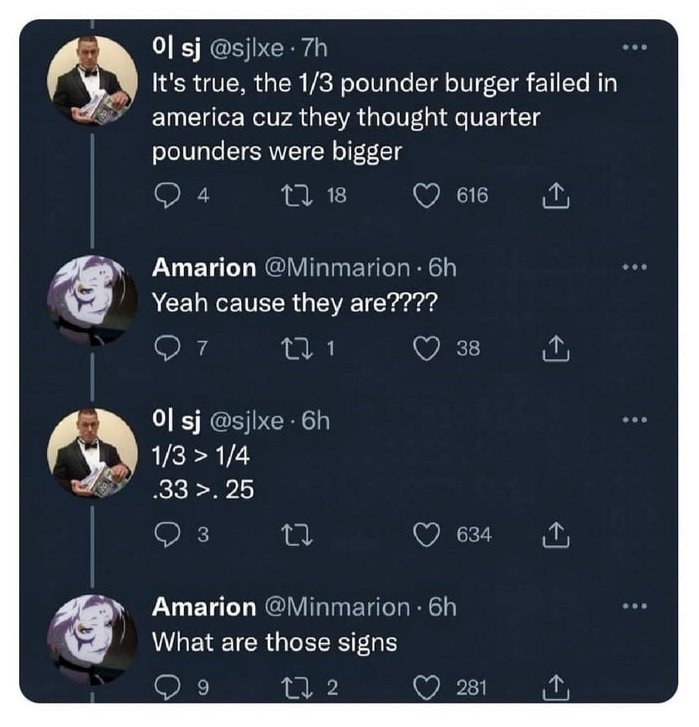this post was submitted on 14 Aug 2024
944 points (96.7% liked)
Facepalm
457 readers
1 users here now
Anything that makes you apply your hand to your face.
founded 7 months ago
MODERATORS
you are viewing a single comment's thread
view the rest of the comments
view the rest of the comments

The problem occurs when you have a 1/4 pound burger for $1 and a 1/3 pound burger for $1.25. Is it worth it?
If only using fractions in powers of 2 1/2, I understand that it's simpler. A carpenter is happy to meassure 3/16s of an inch, since the tools have notches or marks for that. But when you include other fractions, it becomes messy.
How much more is 1/3 than 1/4? Instead of handling digits, you have to find the lowest common denominator to perform the subtraction. I.e. 1/3 - 1/4 = 4/12 - 3/12 = 1/12.
And at this point, I believe the relationship to the units are lost. Do you have any direct sense to what 1/12 of a pound is?
The 1/3 pound burger is (1/3)/(1/4) times the size of the 1/4 pound burger. So the burger is worth it if $1*(1/3)/(1/4) is greater than $1.25. We arrive at $4/3 which we want to compare to $1.25. Now, since we are relating units which use fractions to units where fractions are unusual, we have another problem. (Yes, we can easily see tha 4/3 = 1.333..., but we wanted to use fractions, right?). So to compare the numbers, we can see that 1.25 = 125/100, which we can simplify to 5/4. So in the end we are left with the simple problem of finding which is bigger between 4/3 or 5/4.
To summarize, I agree that fractions are nice when you have them in a vacuum and don't have to relate them to numbers of other units.